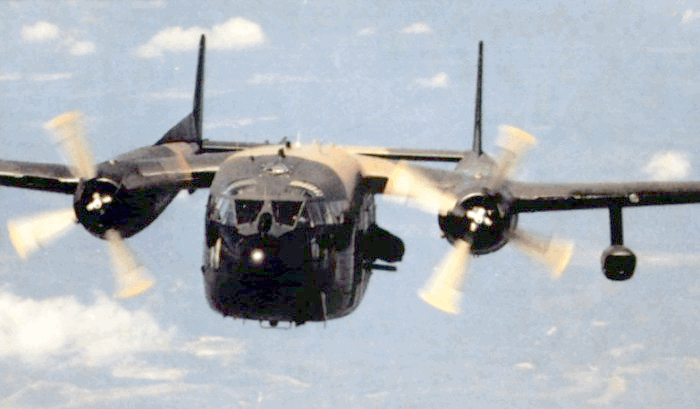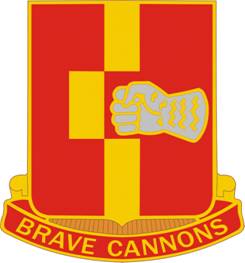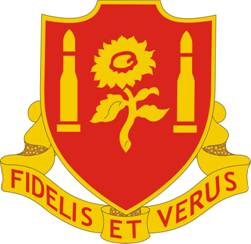|
Dak Pek Camp
Dak Pek Camp (also known as Dak Pek Special Forces Camp) is a former U.S. Army and Army of the Republic of Vietnam (ARVN) base northwest of Kon Tum in the Central Highlands of Vietnam. History The 5th Special Forces Group first established a base at here in December 1962 to monitor communist infiltration along the Ho Chi Minh Trail. The base was located 14 km from the Laos border, 40 km south of Khâm Đức and approximately 85 km northwest of Kon Tum. 5th Special Forces Detachment A-749 was based here in October 1963, Detachment A-5 was based here in December 1964, Detachment A-211 was based here in 1965 and Detachment A-242 from October 1966. The base was also used as a launch site for MACV-SOG operations into Laos. On 29 May 1968 a de Havilland Canada C-7B Caribou #62-4189 was hit by mortar fire as it landed at Dak Pek causing the right wing to separate, there were no casualties. On 12 April 1970 a People's Army of Vietnam (PAVN) force estimated at two b ... [...More Info...] [...Related Items...] OR: [Wikipedia] [Google] [Baidu] |
Flag Of The Army Of The Republic Of Vietnam
A flag is a piece of fabric (most often rectangular or quadrilateral) with a distinctive design and colours. It is used as a symbol, a signalling device, or for decoration. The term ''flag'' is also used to refer to the graphic design employed, and flags have evolved into a general tool for rudimentary signalling and identification, especially in environments where communication is challenging (such as the maritime environment, where semaphore is used). Many flags fall into groups of similar designs called flag families. The study of flags is known as "vexillology" from the Latin , meaning "flag" or "banner". National flags are patriotic symbols with widely varied interpretations that often include strong military associations because of their original and ongoing use for that purpose. Flags are also used in messaging, advertising, or for decorative purposes. Some military units are called "flags" after their use of flags. A ''flag'' (Arabic: ) is equivalent to a brigad ... [...More Info...] [...Related Items...] OR: [Wikipedia] [Google] [Baidu] |
Battle Of Kham Duc
The Battle of Kham Duc was a major battle of the Vietnam War. The event occurred in Khâm Đức, now district capital of Khâm Đức District, then in Quảng Tín Province (now part of Quảng Nam Province, Vietnam), from 10–12 May 1968. During the Tet Offensive of 1968, the People's Army of Vietnam (PAVN) 2nd Division tried to capture Đà Nẵng, but they were defeated in the Battle of Lo Giang by elements of the U.S. 1st Marine Division and the 23rd Infantry Division (Americal Division). PAVN General Chu Huy Mân disengaged from the fight on the outskirts of the city, and pulled the 2nd Division into the mountains to rest, rebuild, and prepare for the next major operation. The US and allied defenders of the Special Forces camp at Khâm Đức, a small district in the north of Quảng Tín, were chosen as the next target for the 2nd Division. Although the Special Forces camp had never been an obstacle to the constant infiltration of PAVN troops around it, the North ... [...More Info...] [...Related Items...] OR: [Wikipedia] [Google] [Baidu] |
Installations Of The United States Army In South Vietnam ) or political one
{{disambig ...
Installation may refer to: * Installation (computer programs) * Installation, work of installation art * Installation, military base * Installation, into an office, especially a religious (Installation (Christianity) Installation is a Christian liturgical act that formally inducts an incumbent into a new role at a particular place such as a cathedral. The term arises from the act of symbolically leading the incumbent to their stall or throne within the cathedra ... [...More Info...] [...Related Items...] OR: [Wikipedia] [Google] [Baidu] |
Ho Chi Minh Highway
Ho Chi Minh Road or Ho Chi Minh Highway ( vi, Đường Hồ Chí Minh, links=no) is a highway in Vietnam. It runs from the north to the south of Vietnam, west of National Route 1. The highway was named after Hồ Chí Minh. History The route roughly coincides with the Ho Chi Minh trail during the Vietnam War. It is a two-lane highway and is planned to become an 8-lane highway and it will connect Cao Bằng Province by the Sino-Vietnamese border to Cà Mau Province with the total length of 3,167 km. As of 2007, this road runs from Hoa Lac in Hanoi to Ngoc Hoi in Kon Tum Province with a total length of 1,234.5 km. Route In Village number 5, Xuân Trạch commune, Bố Trạch district, Quảng Bình province, the road divides (QL15-QL16 intersection) into two separate roads: Đường Hồ Chí Minh Đông (Ho Chi Minh Highway East) and Đường Hồ Chí Minh Tây (Ho Chi Minh Highway West). Đường Hồ Chí Minh Đông is a well-traveled road with many trucks ... [...More Info...] [...Related Items...] OR: [Wikipedia] [Google] [Baidu] |
Fairchild AC-119
The Fairchild AC-119G Shadow and AC-119K Stinger were twin-engine piston-powered gunships developed by the United States during the Vietnam War. They replaced the Douglas AC-47 Spooky and operated alongside the early versions of the AC-130 Spectre gunship. Design and development By late 1967, the idea of the fixed-wing gunship had been proven so successful, the United States Air Force was having a difficult time keeping up with demand. The newer AC-130s that had been created under Project Gunship II were effective, but were being mostly used for armed reconnaissance and interdiction of the Ho Chi Minh Trail. Furthermore, the C-130 airframe was in active service as a transport, vital to the war effort in Southeast Asia. The Air Force desperately needed a new gunship to replace the vulnerable and underpowered AC-47 in the close air support role, as well as supplementing the AC-130 in attacking targets on the Ho Chi Minh Trail. The Fairchild C-119 Flying Boxcar presented an ... [...More Info...] [...Related Items...] OR: [Wikipedia] [Google] [Baidu] |
Vietnamese Rangers
The Vietnamese Rangers ( vi, Biệt Động Quân), commonly known as the ARVN Rangers, were the light infantry of the Army of the Republic of Vietnam. Trained and assisted by American Special Forces and Ranger advisers, the Vietnamese Rangers infiltrated beyond enemy lines in search and destroy missions. Initially trained as a counter-insurgency light infantry force by removing the fourth company each of the existing infantry battalions, they later expanded into a swing force capable of conventional as well as counter-insurgency operations, and were relied on to retake captured regions. Later during Vietnamization the Civilian Irregular Defense Group program was transferred from MACV and integrated as Border Battalions responsible for manning remote outposts in the Central Highlands. Rangers were often regarded as among the most effective units in the war. Part of this was due to the specialized role of these units, given that they had their origins in French-raised Comma ... [...More Info...] [...Related Items...] OR: [Wikipedia] [Google] [Baidu] |
92nd Field Artillery Regiment
The 92nd Field Artillery Regiment is an inactive parent regiment of the Field Artillery Branch of the United States Army. It was constituted in 1933, with its last active battalions, the 1st and 3rd Battalions, inactivated in 1996. History Interwar period The regiment was constituted on 1 October 1933 in the Regular Army as the 92nd Field Artillery. It was assigned to VIII Corps's 18th Field Artillery Brigade and allotted to the Eighth Corps Area. It was organized by 1934 with headquarters at Tulsa as a Regular Army Inactive unit, manned by a small cadre of Organized Reserve personnel. The regiment conducted summer training at Fort Sill, and was inactivated by January 1940 after its reservists were relieved from the unit. It was reorganized by February 1941 with more reservists at Tulsa. World War II It was redesignated on 1 January 1942 as the 92nd Armored Field Artillery Battalion and assigned to the 2nd Armored Division. It was activated on 8 January at Fort Benni ... [...More Info...] [...Related Items...] OR: [Wikipedia] [Google] [Baidu] |
Bell AH-1 Cobra
The Bell AH-1 Cobra is a single-engined attack helicopter developed and manufactured by the American rotorcraft manufacturer Bell Helicopter. A member of the prolific Huey family, the AH-1 is also referred to as the HueyCobra or Snake. The AH-1 was rapidly developed as an interim gunship in response to the United States Army's needs in the Vietnam War. It used the same engine, transmission and rotor system of the Bell UH-1 Iroquois, which had already proven itself to be a capable platform during the conflict, but paired it with a redesigned narrow fuselage among other features. The original AH-1, being a dedicated attack helicopter, came equipped with stub wings for various weapons, a chin-mounted gun turret, and an armored tandem cockpit, from which its was operated by a pilot and gunner. Its design was shaped to fulfil a need for a dedicated armed escort for transport helicopter, giving the latter greater survivability in contested environments. On 7 September 1965, ... [...More Info...] [...Related Items...] OR: [Wikipedia] [Google] [Baidu] |
57th Assault Helicopter Company
This is a List of aviation companies of the United States Army from the United States Army Aviation Branch The United States Army Aviation Branch is the administrative organization within the United States Army responsible for doctrine, manning and configuration for all army aviation units. After the United States Army Air Corps grew into the Army .... Numbered companies Non-numbered companies References Citations Bibliography * * * * * * * * * * * * * *{{cite book , last1=Zahn, first1=R, title=Snake Pilot , year=2003 , publisher= Brassey's Inc, location= USA , isbn=1-57488-565-0 ... [...More Info...] [...Related Items...] OR: [Wikipedia] [Google] [Baidu] |
29th Field Artillery Regiment
The 29th Field Artillery Regiment is a field artillery regiment of the United States Army, first constituted in 1918 in the National Army (USA). History The Regiment's Battery G was one of the last two combat units to serve in the Vietnam War. On 11 August 1972 it and the 3rd Battalion, 21st Infantry Regiment were stood down. Lineage Constituted 5 July 1918, the 28th Field Artillery, the 29th Field Artillery, and the 30th Field Artillery, became the principle artillery elements of the 10th Division. *The 29th Field Artillery was demobilized 4 February 1919 at Camp Funston, Kansas. *Reconstituted 24 March 1923 in the Regular Army as the 29th Field Artillery. *Assigned 1 August 1940 at Fort Benning, Georgia, (less 2nd Battalion) as part of the 4th Division. *(2nd Battalion activated at Fort Hoyle, Maryland) Inactivated 14 February 1946 at Camp Butner, North Carolina. *Reactivated 15 July 1947 at Fort Ord, California. *Inactivated 1 April 1957 at Fort Lewis, Washington, and r ... [...More Info...] [...Related Items...] OR: [Wikipedia] [Google] [Baidu] |
Dak Seang Camp
Dak Seang Camp (also known as Dak Seang Special Forces Camp) is a former US Army and Army of the Republic of Vietnam (ARVN) base northwest of Kon Tum in the Central Highlands of Vietnam. History The 5th Special Forces Group and CIDG forces first established a base at here in 1964 to monitor communist infiltration along the Ho Chi Minh Trail. The base was located 10 km from the Laotian border, 23 km northwest of Đắk Tô and approximately 64 km northwest of Kon Tum. 5th Special Forces Detachment A-245 was based here in October 1966. On 18 August 1968 the People's Army of Vietnam (PAVN) 101D Regiment, supported by artillery attacked the camp. The attack was beaten back with small arms and artillery fire. On 1 April 1970 the PAVN attacked the camp starting a siege that lasted until 8 May. At the same time the PAVN attacked the Dak Pek Camp. On 15 April 1970 the 170th Assault Helicopter Company dropped the 3rd Battalion, 42nd ARVN Regiment into a landing ... [...More Info...] [...Related Items...] OR: [Wikipedia] [Google] [Baidu] |
People's Army Of Vietnam
The People's Army of Vietnam (PAVN; vi, Quân đội nhân dân Việt Nam, QĐNDVN), also recognized as the Vietnam People's Army (VPA) or the Vietnamese Army (), is the military force of the Socialist Republic of Vietnam and the armed wing of the ruling Communist Party of Vietnam. The PAVN is a part of the Vietnam People's Armed Forces and includes: Ground Force, Navy, Air Force, Border Guard and Coast Guard. However, Vietnam does not have a separate Ground Force or Army branch. All ground troops, army corps, military districts and specialised arms belong to the Ministry of Defence, directly under the command of the Central Military Commission, the Minister of Defence, and the General Staff of the Vietnam People's Army. The military flag of the PAVN is the flag of the Socialist Republic of Vietnam, with the words ''Quyết thắng (Determination to win)'' added in yellow at the top left. During the French Indochina War (1946–1954), the PAVN was often referred to ... [...More Info...] [...Related Items...] OR: [Wikipedia] [Google] [Baidu] |





